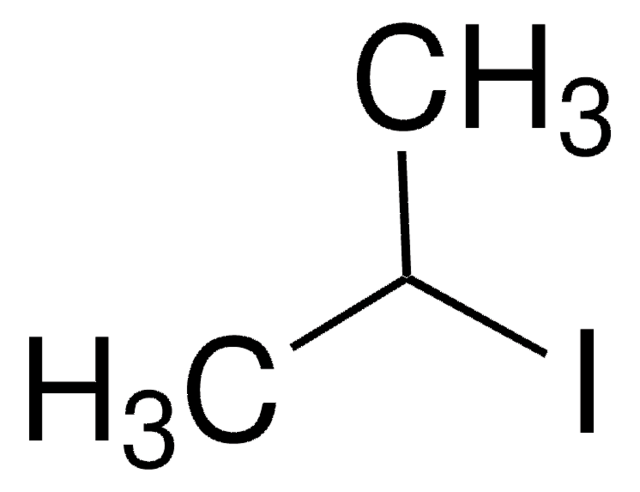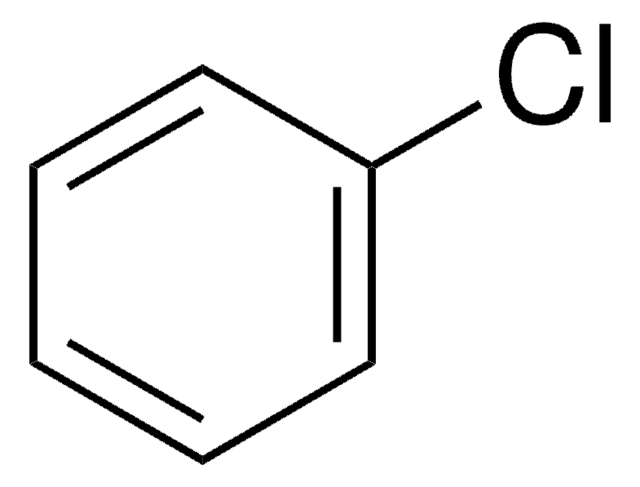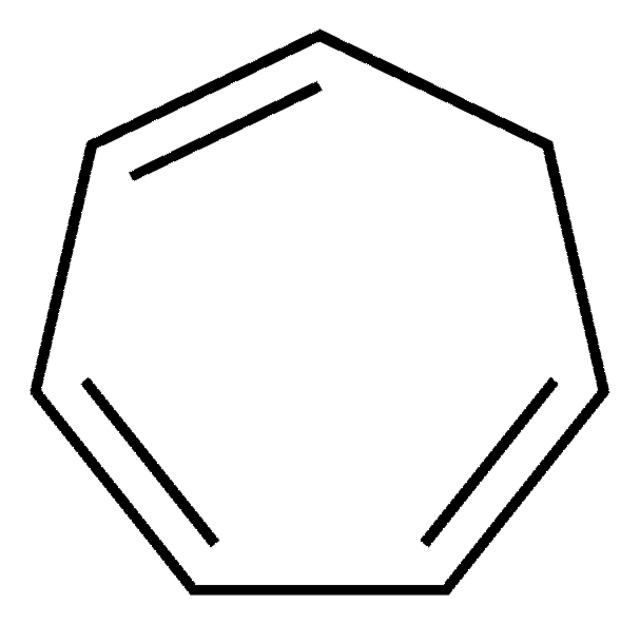Kluczowe dokumenty
296988
Octane
anhydrous, ≥99%
Synonim(y):
n-Octane
About This Item
Polecane produkty
klasa czystości
anhydrous
Poziom jakości
gęstość pary
3.9 (vs air)
ciśnienie pary
11 mmHg ( 20 °C)
Próba
≥99%
Formularz
liquid
temp. samozapłonu
428 °F
granice wybuchowości
6.5 %
zanieczyszczenia
<0.002% water
<0.005% water (100 mL pkg)
pozostałość po odparowaniu
<0.0003%
współczynnik refrakcji
n20/D 1.398 (lit.)
bp
125-127 °C (lit.)
mp
−57 °C (lit.)
rozpuszczalność
ethanol: soluble(lit.)
gęstość
0.703 g/mL at 25 °C (lit.)
ciąg SMILES
CCCCCCCC
InChI
1S/C8H18/c1-3-5-7-8-6-4-2/h3-8H2,1-2H3
Klucz InChI
TVMXDCGIABBOFY-UHFFFAOYSA-N
Szukasz podobnych produktów? Odwiedź Przewodnik dotyczący porównywania produktów
Opis ogólny
Zastosowanie
- Fotoniczny materiał krystaliczny do wykrywania online oparów węglowodorów niepolarnych...: Badania nad nowym fotonicznym materiałem krystalicznym mającym na celu skuteczne wykrywanie niepolarnych węglowodorów, takich jak oktan, zwiększając bezpieczeństwo i monitorowanie w środowiskach przetwarzania chemicznego (Bolshakov et al., 2022).
Opakowanie
Inne uwagi
Informacje prawne
Hasło ostrzegawcze
Danger
Zwroty wskazujące rodzaj zagrożenia
Zwroty wskazujące środki ostrożności
Klasyfikacja zagrożeń
Aquatic Acute 1 - Aquatic Chronic 1 - Asp. Tox. 1 - Flam. Liq. 2 - Skin Irrit. 2 - STOT SE 3
Organy docelowe
Central nervous system
Kod klasy składowania
3 - Flammable liquids
Klasa zagrożenia wodnego (WGK)
WGK 2
Temperatura zapłonu (°F)
55.4 °F - closed cup
Temperatura zapłonu (°C)
13 °C - closed cup
Środki ochrony indywidualnej
Eyeshields, Faceshields, Gloves, type ABEK (EN14387) respirator filter
Wybierz jedną z najnowszych wersji:
Masz już ten produkt?
Dokumenty związane z niedawno zakupionymi produktami zostały zamieszczone w Bibliotece dokumentów.
Klienci oglądali również te produkty
Protokoły
Separation of Hexane; Heptane; Octane; Nonane; Decane; Undecane; Dodecane; Tetradecane; Hexadecane; Octadecane; Eicosane; Tetracosane; Octacosane; Dotriacontane; Hexatriacontane; Tetracontane; Tetratetracontane
-1,3-Dimethylcyclopentane; 1,1-Dimethylcyclopentane; 2,2,3-Trimethylpentane; 2,2-Dimethylbutane; 2,2-Dimethylhexane; 2,2-Dimethylpentane; 2,3-Dimethylbutane; 2,3-Dimethylhexane; 2,4-Dimethylheptane; 2,4-Dimethylpentane; 2,5-Dimethylheptane; 2-Methylhexane; 2-Methylpentane; 3,3-Dimethylpentane; 3,4-Dimethylhexane; 3-Ethylpentane; 3-Methyloctane; 4-Methylheptane; Ethylbenzene; Ethylcyclopentane; 2,6-Dimethylheptane; 3-Ethylheptane
-Xylene; Nonane; Propylbenzene; Mesitylene; 1,2,4-Trimethylbenzene; 1,2,3-Trimethylbenzene; 1,3-Diethylbenzene; 1,4-Dimethyl-2-ethylbenzene; 1,2-Dimethyl-4-ethylbenzene; Durene; 1,2,3,5-Tetramethylbenzene; 1,2,3,5-Tetramethylbenzene; 2-Methylnaphthalene (β)
Nasz zespół naukowców ma doświadczenie we wszystkich obszarach badań, w tym w naukach przyrodniczych, materiałoznawstwie, syntezie chemicznej, chromatografii, analityce i wielu innych dziedzinach.
Skontaktuj się z zespołem ds. pomocy technicznej













